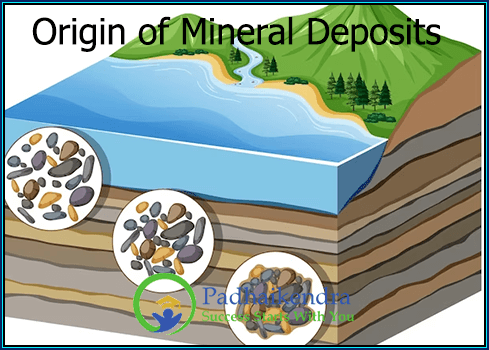The origin of mineral deposits is a complex and varied process that can occur through a variety of geological events and processes. Some common factors that contribute to the formation of mineral deposits include:
- Magmatic processes: Some minerals can be formed through the cooling and solidification of magma or lava, such as metallic ores like copper, nickel, and platinum.
- Hydrothermal processes: Mineral deposits can also be formed through the action of hot, mineral-rich fluids that circulate through the Earth’s crust. As these fluids cool, the minerals can precipitate out and form deposits, such as gold and silver veins.
- Sedimentary processes: Some minerals can be formed through the accumulation and cementation of sediments, such as coal, iron ore, and limestone.
- Metamorphic processes: Heat and pressure can cause minerals to recrystallize and form new minerals, such as the formation of garnets in metamorphic rocks.
- Weathering and erosion: Over time, rocks can weather and erode, releasing minerals that can be transported and deposited elsewhere, such as the formation of placer deposits containing gold and other heavy minerals.
The formation of mineral deposits can occur over a wide range of geological timescales, from millions of years to just a few years. The presence and abundance of certain minerals in a particular location can also depend on the underlying geology, including the types of rocks, the presence of faults and fractures, and the availability of water and other fluids.





